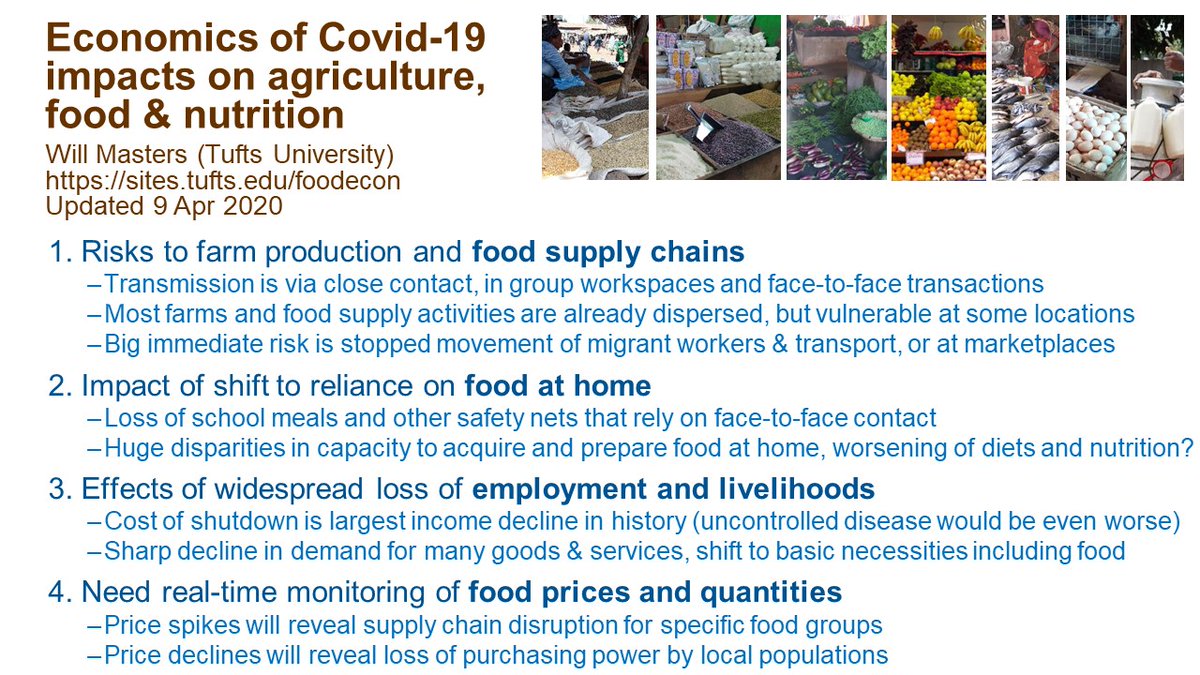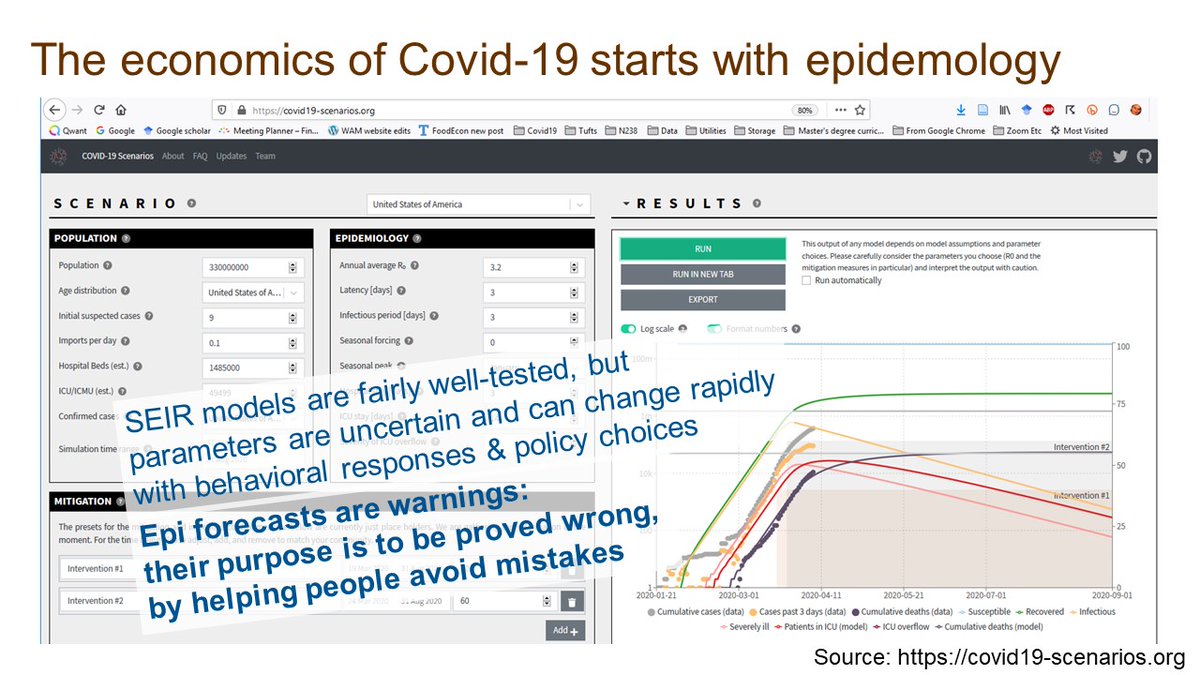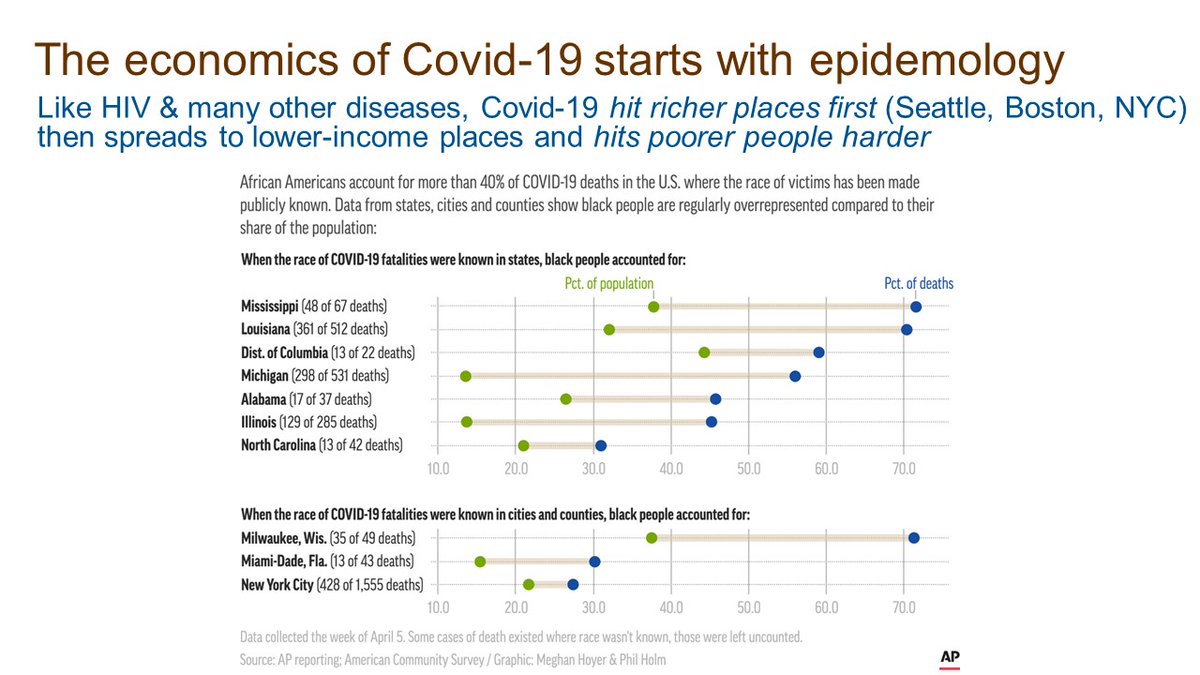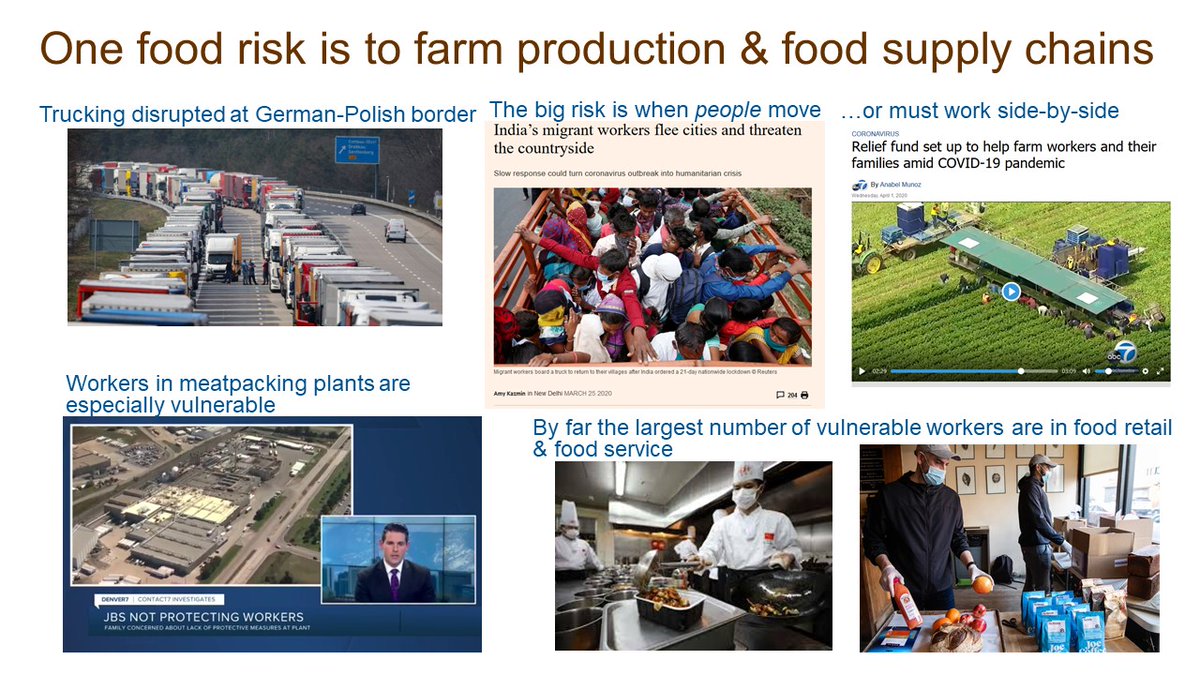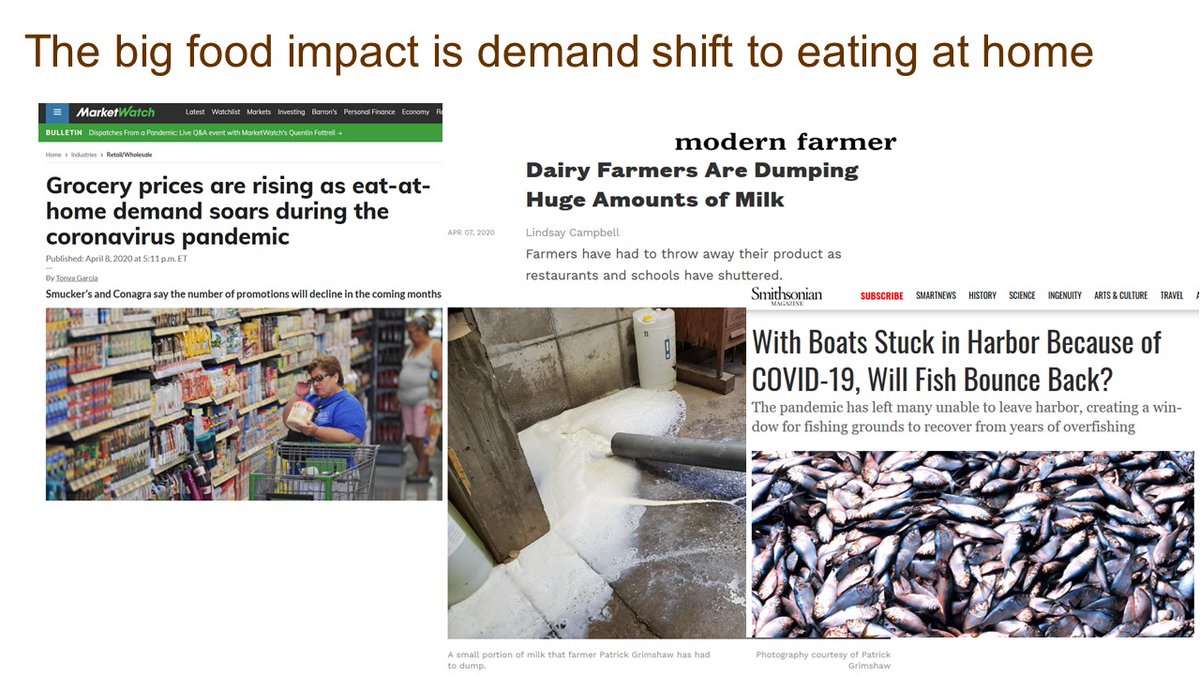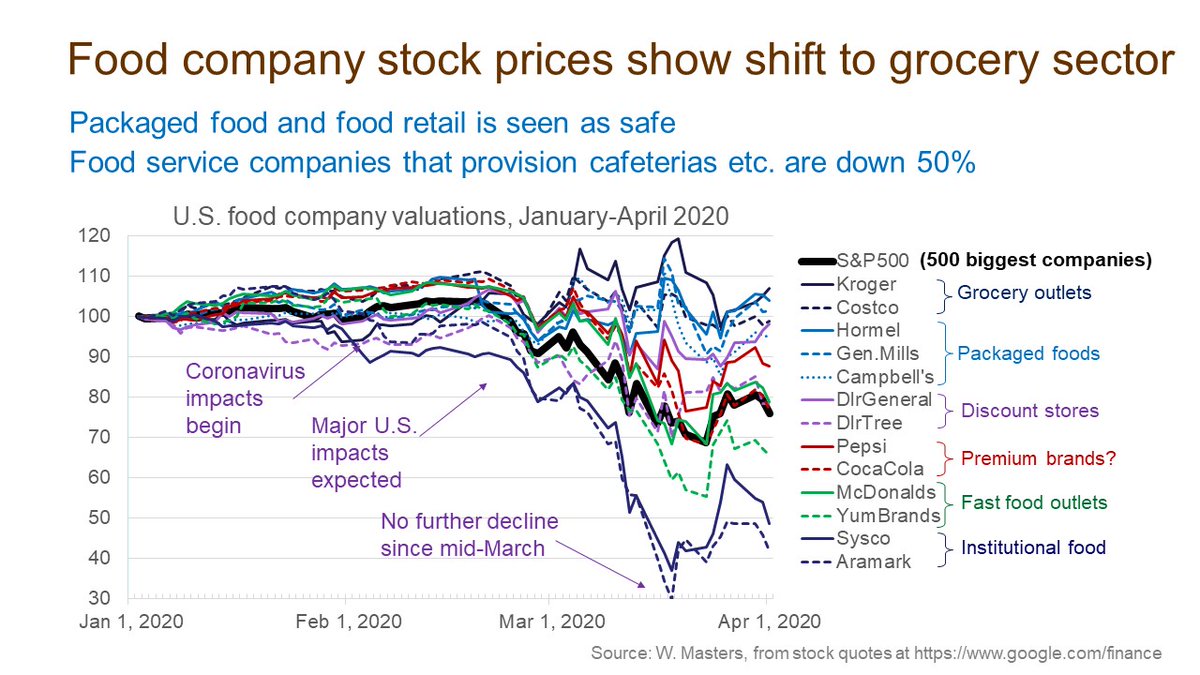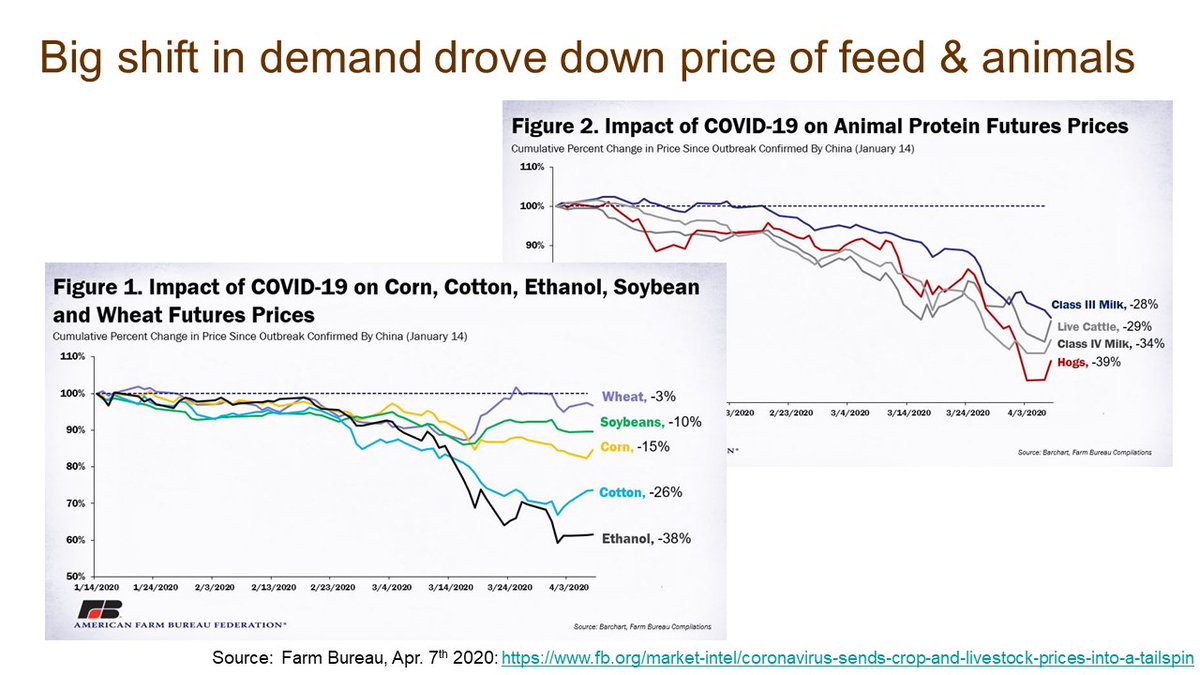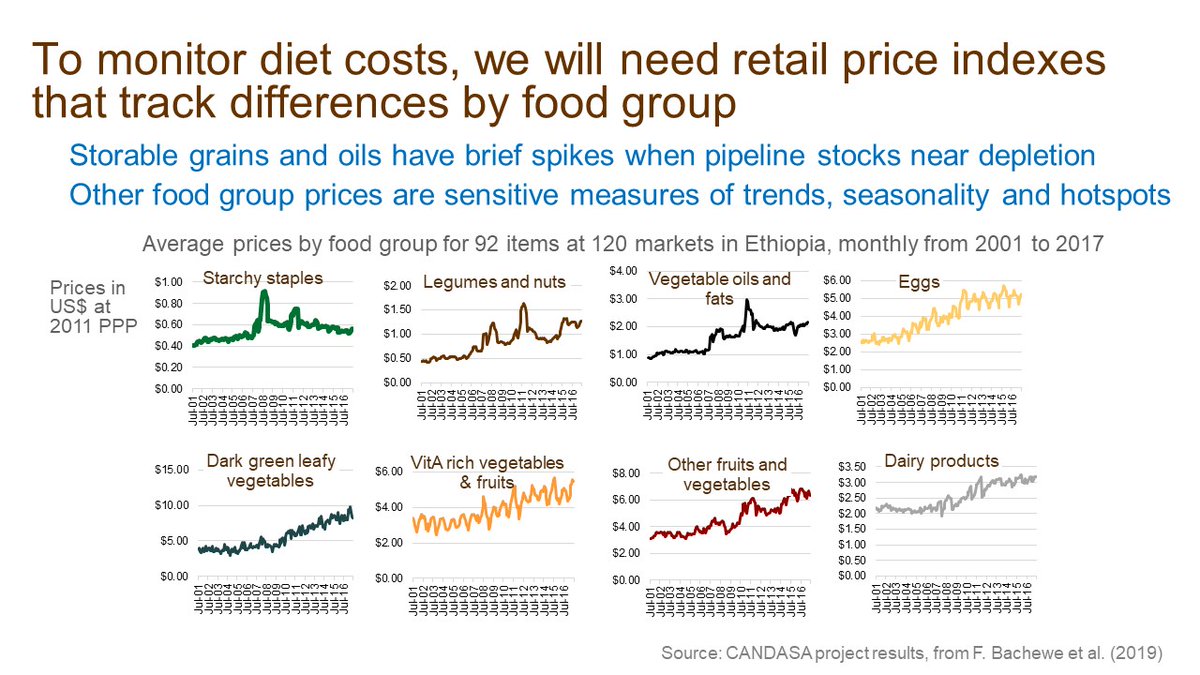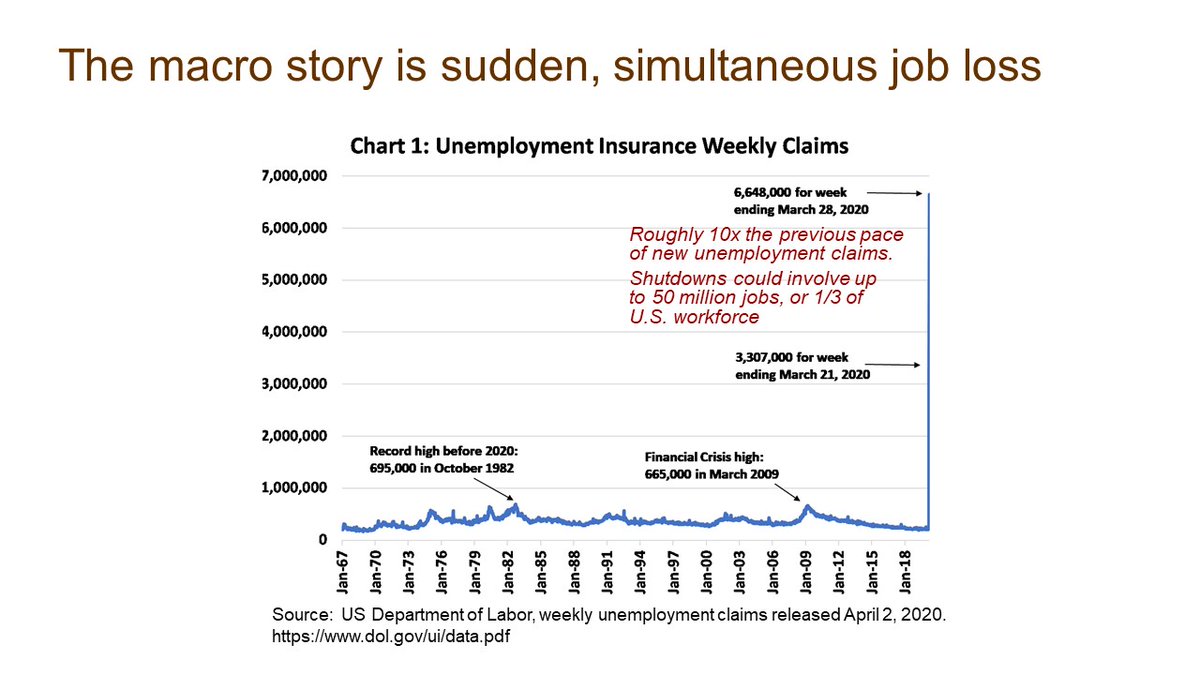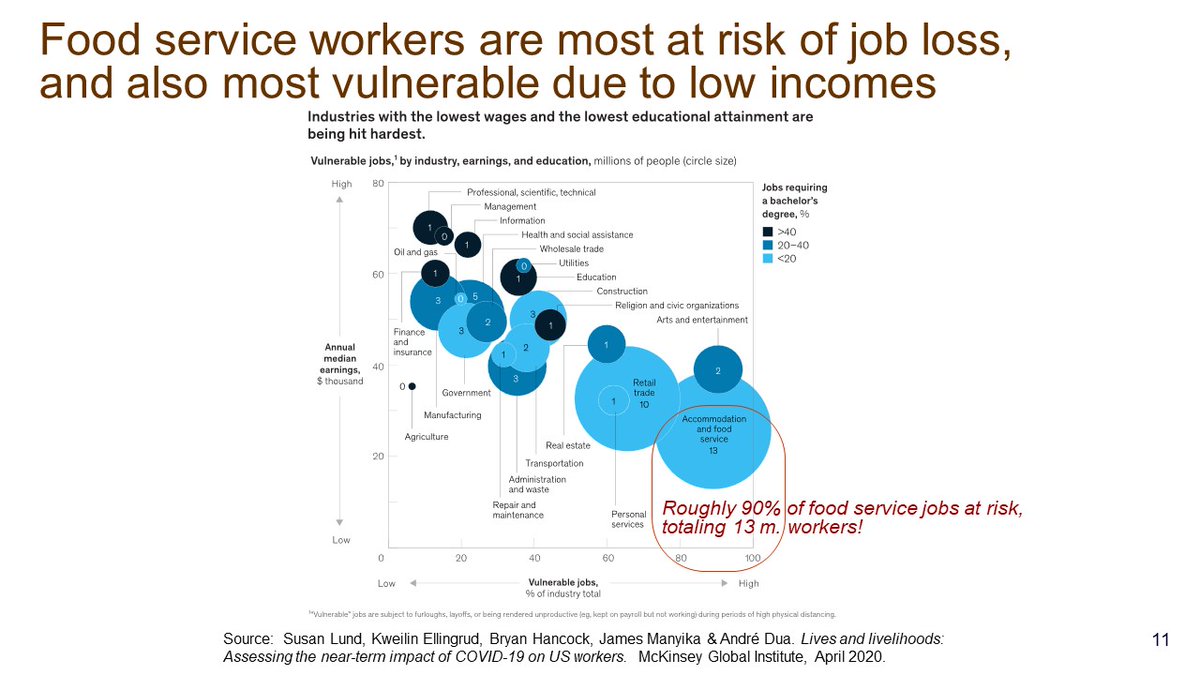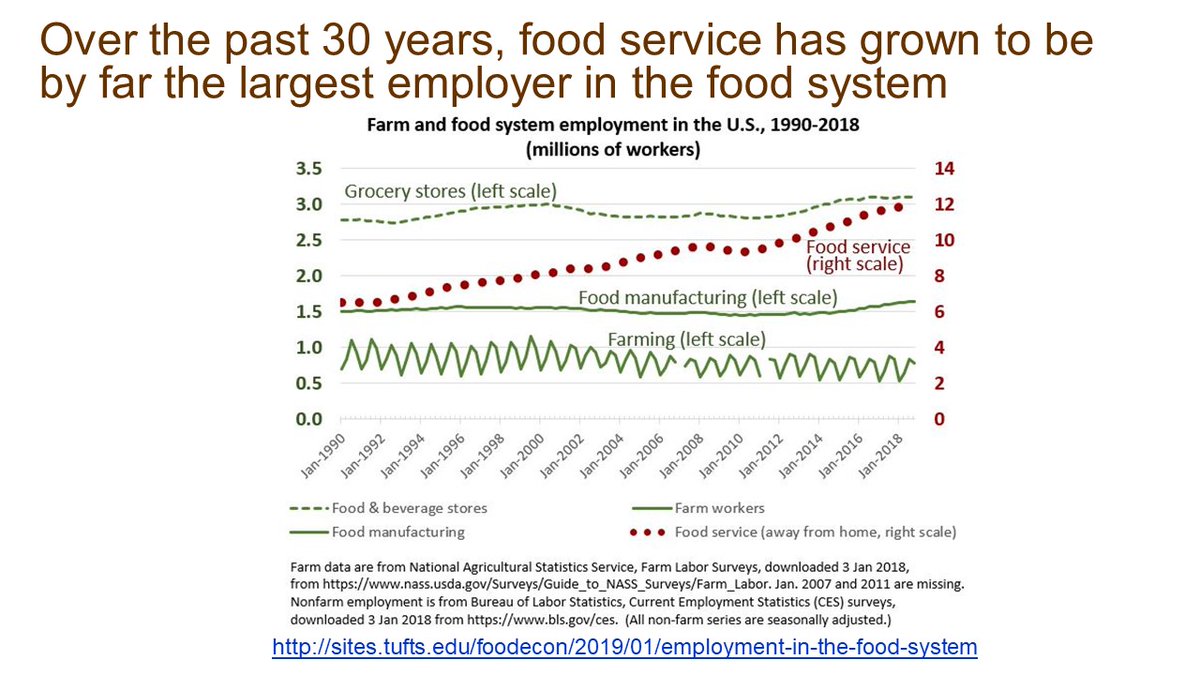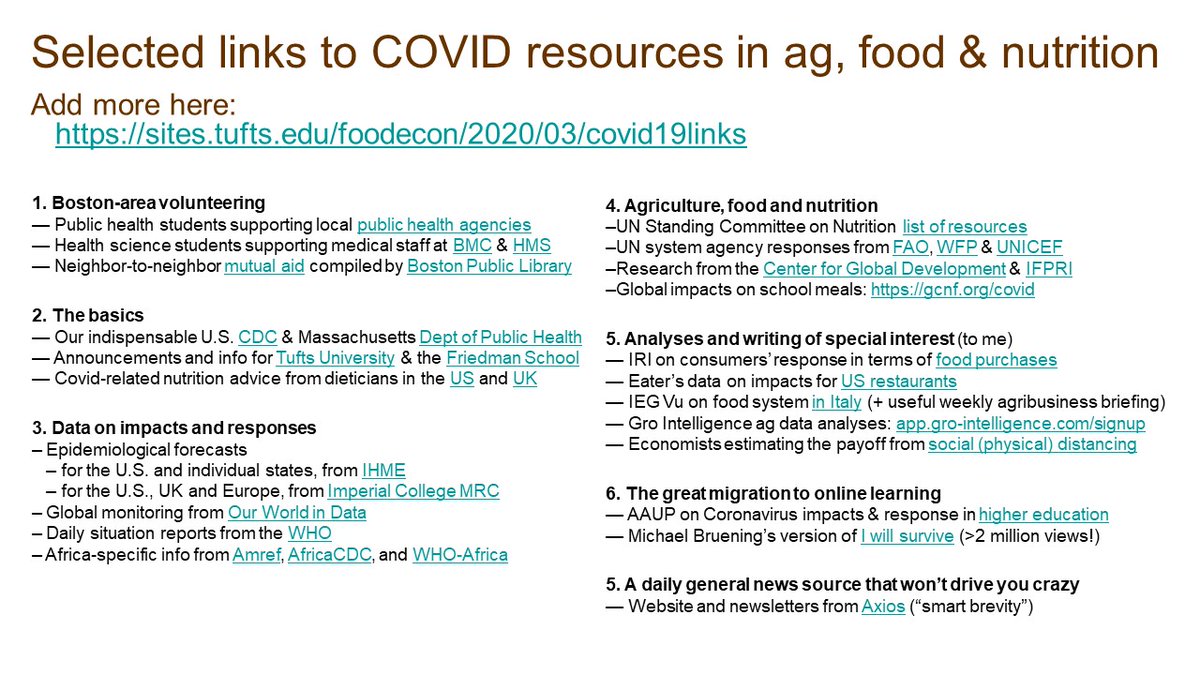For our @TuftsNutrition PhD seminar, a longer updated slide deck on #COVID impacts on agriculture, food & nutrition, starting with this overview (1/14)
The economics of #COVIDー19 start with its direct impacts on health. Epidemiological models are forecasts, to help people avoid harm. Their aim is to change behavior. If we act responsibly, parameter values will improve over time. (2/14)
The spread of COVID starts with international travel, then within communities -- first cities, then rural areas. Initial vulnerability and the society& #39;s speed & effectiveness of response varies widely, and determines the extent of harm. (3/14)
Like many other diseases, COVID hit richer places first but hits poorer people harder. Underlying disparities in different communities& #39; ability to avoid infection, access to care and preexisting conditions have terrible consequences. (4/14)
For food production and supply chains, risk arises wherever people have to work side-by-side, or migrate from one place to another. (5/14)
The big, sudden shock to food systems is shifting from food service, school meals and restaurants to groceries for eating at home. Huge impacts especially for milk, fish and other perishable foods that are most widely consumed away from home. (6/14)
We can track investors& #39; expectations using food company stock prices, as forecasts of future earnings. (7/14)
Commodity traders provide continuously-updated forecasts of demand changes, which has dropped most for fuel (ethanol) and livestock products, and little change in demand for staple foods like wheat. (8/14)
One kind of data we don& #39;t yet have is retail price indexes to track changes by food group.
Different kinds of food have very different price dynamics, and big impacts on the cost of healthier diets. (9/14)
Different kinds of food have very different price dynamics, and big impacts on the cost of healthier diets. (9/14)
Affordability of healthy diets and so much else depends on peoples& #39; income. For people not directly affected by the disease, by far the biggest impact of COVID is loss of employment and income. (10/14)
Since COVID spreads by direct contact, job loss is most severe in face-to-face services. Those jobs rely on people skills, with high levels of physical effort and low pay. A very large fraction of all jobs at risk are in food retail and food service. (11/14)
Every community I know has responded to COVID with heartfelt generosity, intense energy and astonishingly rapid innovation. (13/14)
Thank you for reading, and for all you& #39;re doing wherever you are.
There& #39;s more @TuftsNutrition, and on my own teaching blog ( https://sites.tufts.edu/foodecon )">https://sites.tufts.edu/foodecon&... as well as our CANDASA project on food prices ( https://sites.tufts.edu/candasa/events ).">https://sites.tufts.edu/candasa/e...
There& #39;s more @TuftsNutrition, and on my own teaching blog ( https://sites.tufts.edu/foodecon )">https://sites.tufts.edu/foodecon&... as well as our CANDASA project on food prices ( https://sites.tufts.edu/candasa/events ).">https://sites.tufts.edu/candasa/e...

 Read on Twitter
Read on Twitter